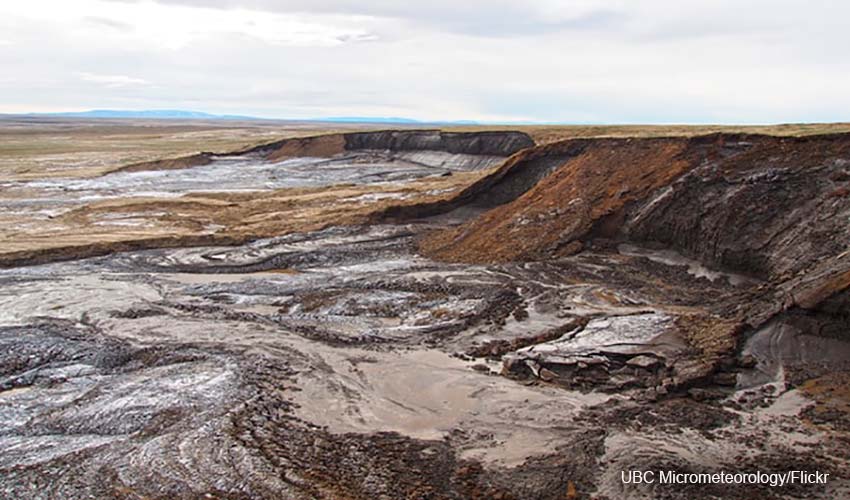FAQs about Permafrost

3. What is the function of permafrost?
The function of frozen permafrost soils is to serve as large carbon storage and to prevent CO2 from rising into the atmosphere. Permafrost is like a great thermostat that regulates the weather. These frozen soils have been high in organic carbon for millions of years and act as seals to prevent carbon from escaping into the atmosphere. Experts estimate that there are around 1.7 billion tons stored under the permafrost. This figure represents about double the total carbon in the atmosphere.
When the soil remains frozen, carbon is inactive, but when permafrost thaws, the decomposition of organic matter can be activated violently. This is due to the action of bacteria present that convert carbon to carbon dioxide. In this case, the CO2 emitted from these carbon deposits can rise into the atmosphere in significant quantities, altering the planet’s climate system. Releasing large volumes of carbon dioxide increases the greenhouse effect and consequently the temperature across the planet.
FAQS about Permafrost
1. What is permafrost and where is it located?
2. Are there frozen soils without ice?
3. What is the function of permafrost?
4. What dangers does permafrost pose?
5. Is Siberian permafrost thawing faster?
6. Is Russia the most vulnerable country due to permafrost?
7. What are the bacteria related to permafrost?
8. Can bacteria hibernating for millions of years in permafrost be activated?
9. Is there permafrost in the southern hemisphere?
10. What is the difference between the tundra and the taiga?
Other secctions of Permafrost
Article
Magazine
You can also see it in…
Infographics

Photo Gallery.

Video Gallery

